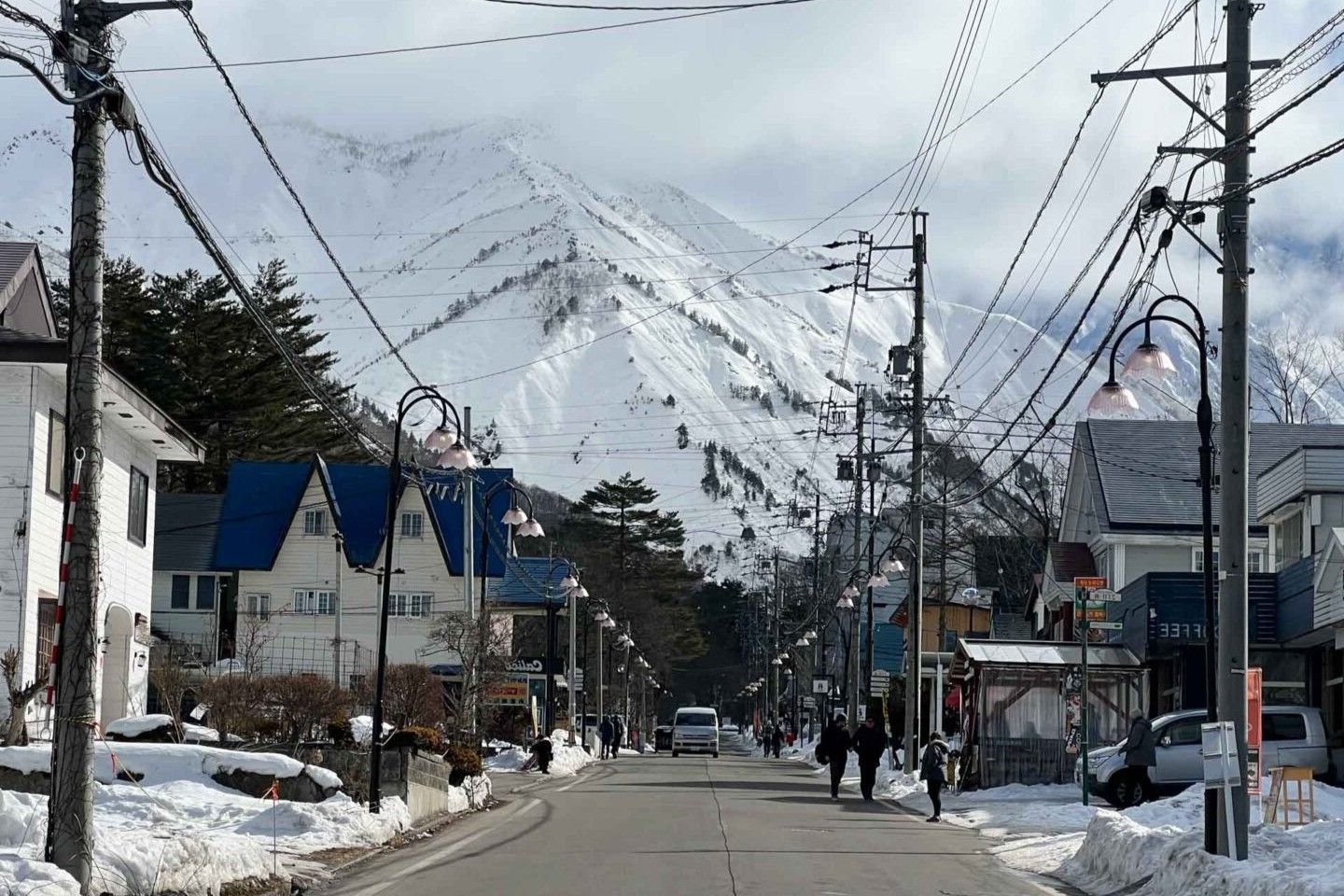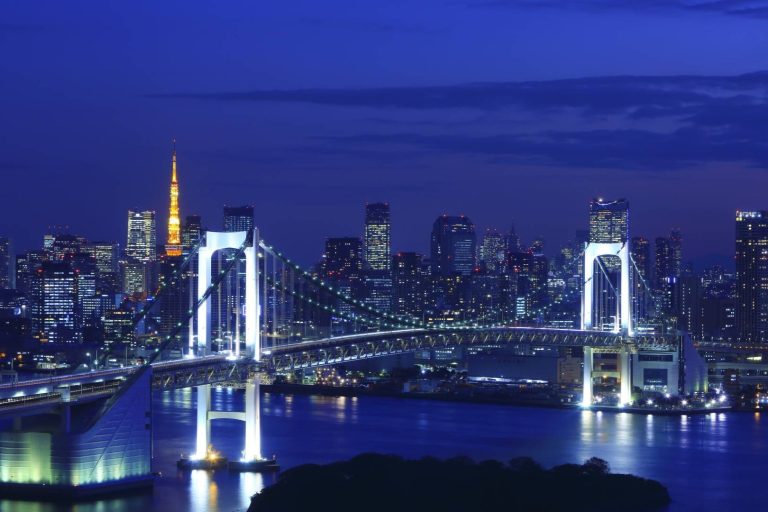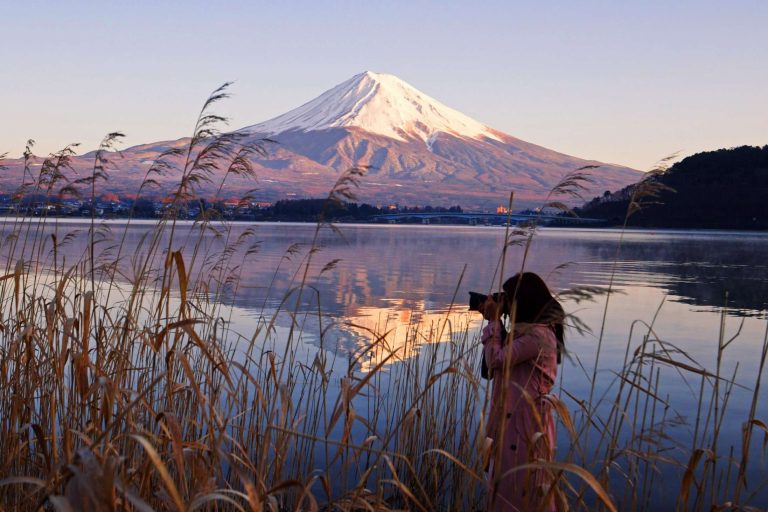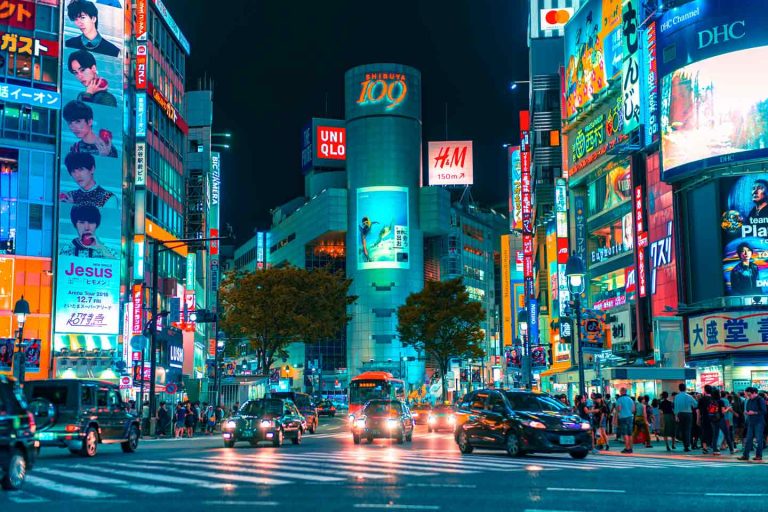Alpine Adventure Awaits in Japan’s Premier Mountain Destination
Nestled in the heart of the Japanese Alps, Hakuba Valley stands as one of Japan’s most celebrated winter destinations, offering world-class skiing alongside rejuvenating natural hot springs. This mountain paradise gained international recognition when it hosted alpine events during the 1998 Nagano Winter Olympics, establishing itself as a premier destination for snow sports enthusiasts from around the globe.
The valley’s unique combination of powder snow, diverse terrain, and therapeutic onsen creates an experience that goes far beyond typical winter recreation. After carving through pristine slopes under crisp mountain air, visitors can soak their muscles in mineral-rich waters while gazing at snow-capped peaks. This perfect marriage of adventure and relaxation has made Hakuba a must-visit destination for those seeking both thrills and tranquility.
What sets Hakuba apart from other ski destinations is its accessibility from major cities and the authentic Japanese mountain culture that permeates every aspect of the visitor experience. The region offers something for everyone, from challenging off-piste adventures to gentle family slopes, complemented by traditional hospitality and modern amenities.
Overview of Hakuba Ski Resorts
Hakuba Valley encompasses multiple interconnected ski areas, each offering distinct characteristics and experiences for winter sports enthusiasts. The region’s diverse terrain caters to all skill levels, from beginner-friendly gentle slopes to challenging expert runs that test even the most seasoned skiers and snowboarders.
The valley’s strategic location in the Northern Alps ensures consistent snowfall throughout the winter season, typically from December through April. This reliable snow base, combined with modern lift systems and grooming equipment, creates optimal conditions for winter sports. The resorts work together to provide comprehensive lift tickets and shuttle services, making it easy for visitors to experience multiple areas during their stay.
Each resort maintains its own character while contributing to the overall Hakuba experience. Some focus on family-friendly activities and beginner instruction, while others cater to advanced skiers seeking steep terrain and deep powder. This diversity ensures that groups with varying skill levels can find suitable options within the same valley, making Hakuba an ideal destination for mixed-ability parties.
Hakuba Goryu Ski Resort
Hakuba Goryu stands out as one of the valley’s most comprehensive ski areas, featuring extensive terrain that hosted Olympic alpine events. The resort offers over 15 courses spanning different difficulty levels, from gentle beginner slopes to challenging expert runs that wind down the mountainside through pristine forests.
The resort’s modern lift system efficiently transports skiers and snowboarders up the mountain, minimizing wait times even during peak periods. Goryu’s strategic layout allows for excellent flow between different areas of the mountain, enabling visitors to experience varied terrain without lengthy traverses or crowded bottlenecks.
Hakuba Happoone Ski Resort
Happoone carries significant Olympic heritage, having served as the main venue for alpine skiing events during the 1998 Winter Games. This prestigious history is evident in the resort’s well-designed courses and professional-grade facilities that continue to attract international competitions and training camps.
The resort features diverse slopes that challenge skiers of all abilities, from wide-open beginner areas perfect for learning fundamental techniques to steep, technical runs that demand advanced skills. Local cuisine offerings throughout the mountain provide authentic Japanese flavors, though visitors should check current operating schedules as some dining facilities may have limited availability.
Hakuba Iwatake Snow Field
Iwatake Snow Field offers some of the most spectacular panoramic views in the entire valley, with vistas stretching across snow-covered peaks and pristine alpine landscapes. The resort’s terrain utilization maximizes the natural contours of the mountain, creating varied skiing experiences that take advantage of natural features.
Premium VIP services set Iwatake apart from other areas, providing enhanced experiences for visitors seeking luxury amenities alongside their mountain adventures. These services include priority lift access, premium dining options, and personalized assistance that elevates the overall experience.
Accessibility and Transportation
Reaching Hakuba Valley is remarkably convenient from major Japanese cities, with regular shuttle bus services connecting the resorts to transportation hubs. The shuttle system operates on reliable schedules, making it easy for visitors to plan their daily activities without worrying about transportation logistics.
For those preferring private transportation, well-maintained roads provide direct access to each resort area. Parking facilities accommodate both day visitors and longer-term guests, with some areas offering heated parking to ensure vehicles remain accessible even during heavy snowfall periods.
Family-friendly Facilities
Hakuba Valley prioritizes family experiences with dedicated learning areas, children’s programs, and facilities designed specifically for younger visitors. These areas feature gentle slopes, specialized instruction, and safety measures that allow children to develop confidence while learning fundamental skiing and snowboarding skills.
Family rest areas provide comfortable spaces for breaks, equipment storage, and meal times. Many facilities offer rental equipment sized specifically for children, eliminating the need for families to transport bulky gear when traveling with young skiers.
Night Skiing Opportunities
Selected areas within Hakuba Valley offer night skiing experiences from late December through late March, extending the daily skiing window and providing unique atmospheric conditions. Illuminated slopes create magical winter landscapes, allowing visitors to experience the mountains under starlit skies.
Night skiing conditions often feature different snow textures and visibility challenges that add variety to the skiing experience. The cooler evening temperatures frequently result in excellent snow conditions, particularly during periods of marginal daytime weather.
Dining Options at Ski Resorts
Mountain dining in Hakuba ranges from quick grab-and-go options to sit-down restaurants featuring local specialties and international cuisine. Many establishments focus on hearty, warming dishes that provide energy for active mountain days while showcasing regional ingredients and cooking traditions.
Traditional Japanese mountain foods, including hot noodle dishes and grilled specialties, offer authentic flavors that complement the cultural experience. Some dining venues provide spectacular mountain views, creating memorable meal experiences that extend beyond just sustenance.
Ski Resort Ticket Prices and Dates
Hakuba Valley operates on a comprehensive ticketing system with options ranging from single-day passes to multi-day packages that provide access to multiple resort areas. Pricing varies based on season timing, with peak periods during holidays and powder days commanding premium rates.
Detailed ticket information and current pricing is available through resort websites and local ticket offices. Many accommodations offer package deals that combine lodging with lift tickets, providing value for multi-day visits while simplifying the booking process.
Scenic Views and Natural Beauty
The natural beauty surrounding Hakuba Valley extends far beyond the ski slopes themselves, encompassing dramatic mountain vistas, pristine forests, and alpine landscapes that change throughout the winter season. Clear days offer spectacular views of the Japanese Alps, while storm periods create atmospheric conditions that showcase the raw power and beauty of mountain weather.
Photography opportunities abound throughout the valley, from sunrise alpenglow on distant peaks to intimate forest scenes along tree-lined runs. The changing light conditions throughout the day create constantly evolving scenic displays that reward those who take time to appreciate their surroundings beyond just the skiing experience.
Therapeutic Hot Springs Throughout the Region
Hakuba Valley’s geothermal activity creates numerous natural hot springs that provide perfect relaxation after active mountain days. These onsen offer more than just warm water; they deliver mineral-rich therapeutic experiences that have been valued in Japanese culture for centuries. The region’s diverse spring sources create varied water compositions, each offering unique health benefits and bathing experiences.
Omachi City features numerous hot spring locations, including secluded mountain springs like Kuzu and Nanakura in the remote Takase Valley. These hidden gems provide intimate bathing experiences surrounded by pristine natural settings, accessible to those willing to venture beyond the main resort areas. More accessible options near Kurobe Dam and Lake Kizaki offer convenient relaxation without requiring extensive travel.
Hakuba Village concentrates six different spring sources within a relatively compact area, creating exceptional variety for onsen enthusiasts. This concentration allows visitors to experience multiple spring types during a single stay, comparing different water compositions and therapeutic properties. The village setting provides easy access between different onsen facilities, making it simple to incorporate hot spring visits into daily mountain activities.
Otari Village stands out for its abundant natural spring waters and diverse hot spring experiences that range from modern resort facilities to traditional mountain springs hidden in forest settings. The village’s commitment to preserving natural spring characteristics while providing comfortable facilities creates authentic experiences that honor traditional onsen culture.
Popular Onsen Destinations Near Ski Areas
The strategic placement of hot springs throughout Hakuba Valley ensures that relaxation is never far from mountain activities. Many onsen facilities operate shuttle services or provide easy walking access from major ski areas, making it convenient to transition from slopes to springs without complicated logistics.
Happo Onsen offers mineral-rich waters particularly beneficial for muscle relaxation and skin health, making it ideal for post-skiing recovery. The facility’s indoor and outdoor bath options allow visitors to choose their preferred bathing environment, whether seeking shelter from winter weather or wanting to experience outdoor bathing surrounded by snow-covered landscapes.
Katakuri Onsen features alkaline waters known for their skin-softening properties, earning it the nickname of ‘beauty bath’ among regular visitors. The facility’s design maximizes views of surrounding mountains while maintaining intimate bathing atmospheres that promote relaxation and contemplation.
Himegawa Onsen provides salty mineral waters that create unique bathing sensations and are believed to offer enhanced therapeutic benefits for circulation and joint health. The distinct water composition sets this onsen apart from others in the region, providing variety for those exploring multiple hot spring experiences.
Goryu Onsen combines convenient location with high-quality facilities, making it a popular choice for skiers staying in the central valley area. The onsen’s operating hours accommodate both early morning and evening visits, fitting well with various skiing schedules and preferences.
Onsen Etiquette and Cultural Experience
Visiting Japanese hot springs involves understanding and respecting traditional bathing customs that have evolved over centuries. These practices ensure comfortable experiences for all visitors while preserving the cultural significance of onsen bathing. Proper etiquette begins before entering the bathing areas and continues throughout the entire visit.
Thorough washing before entering communal baths represents the most fundamental onsen rule, demonstrating respect for other bathers and maintaining water cleanliness. Washing stations provide everything needed for complete cleaning, including soap, shampoo, and handheld showers. Taking time for proper preparation shows cultural awareness and consideration for the shared bathing environment.
Quiet, respectful behavior within bathing areas maintains the peaceful atmosphere that makes onsen experiences restorative. Loud conversations, splashing, or disruptive activities conflict with the contemplative nature of hot spring bathing. Many visitors find that embracing this quieter approach enhances their own relaxation and appreciation of the experience.
Textiles and bathing suits are not permitted in traditional onsen, requiring visitors to adapt to communal nude bathing. This practice, while initially challenging for some international visitors, represents an important aspect of Japanese bathing culture. Most visitors find that the shared vulnerability creates a sense of equality and community that enhances the overall experience.
Health Benefits and Therapeutic Properties
Hakuba Valley’s hot springs offer documented health benefits that extend beyond simple relaxation, with different mineral compositions providing specific therapeutic properties. The region’s diverse geological activity creates springs with varying mineral content, allowing visitors to experience different health benefits depending on their chosen onsen.
Alkaline waters, common throughout the valley, are particularly beneficial for skin health and muscle recovery. These springs help neutralize skin acidity while promoting circulation and reducing inflammation from physical activity. Regular soaking in alkaline hot springs can improve skin texture and provide relief from muscle soreness associated with skiing and snowboarding.
Salty mineral waters offer enhanced therapeutic benefits for circulation and joint health, making them particularly valuable for visitors engaging in intensive physical activities. The mineral content helps reduce swelling and promotes faster recovery from muscle fatigue, extending the benefits well beyond the immediate bathing experience.
The heat therapy aspect of onsen bathing provides cardiovascular benefits similar to mild exercise, promoting circulation and helping the body process metabolic waste products more efficiently. This natural therapy complements physical activity by supporting the body’s recovery processes and promoting overall wellness.
Combining Skiing and Hot Spring Experiences
The perfect Hakuba day often combines morning skiing with afternoon onsen relaxation, creating a rhythm that maximizes both adventure and recovery. This combination allows visitors to push their physical limits on the slopes while ensuring proper recovery and preparation for subsequent days of activity.
Many accommodations offer package deals that include both lift tickets and onsen access, simplifying logistics while providing cost savings. These packages recognize the natural pairing of mountain activities with hot spring relaxation, creating comprehensive experiences that address both adventure and wellness needs.
Timing onsen visits to complement skiing schedules enhances both experiences. Morning soaks can warm muscles and prepare the body for physical activity, while evening visits provide therapeutic recovery and relaxation. Some visitors prefer midday onsen breaks, using hot springs as energizing interludes during longer skiing days.
The contrast between cold mountain air and warm spring waters creates sensory experiences that heighten appreciation for both elements. This temperature differential, particularly when experienced in outdoor baths surrounded by snow, provides unique sensations that epitomize the Hakuba winter experience.
Transportation between ski areas and onsen facilities is simplified by the Genki-go shuttle bus system, which connects major hot springs with resort areas. This convenient service eliminates the need for private transportation while ensuring reliable access to both skiing and bathing facilities throughout the valley.
Seasonal Considerations and Best Times to Visit
Hakuba Valley’s winter season typically extends from December through April, with each period offering distinct advantages for different types of visitors. Early season provides fresh snow and fewer crowds, while peak periods offer optimal snow conditions and full facility operations. Understanding seasonal variations helps visitors choose timing that matches their priorities and preferences.
December and January feature the most reliable snow conditions and longest daylight hours for skiing, though temperatures can be quite cold. This period often provides the best powder snow experiences, particularly after storm systems move through the region. Hot springs become especially appealing during these colder months, providing warming refuge from harsh mountain conditions.
February and March typically offer the best balance of snow conditions, weather, and facility availability. Temperatures moderate slightly while maintaining excellent snow quality, and longer days provide extended skiing opportunities. Many consider this the optimal time for combining skiing with hot spring experiences.
Late season skiing, extending into April, provides unique experiences with warming temperatures and changing snow conditions. While hot springs remain appealing year-round, the contrast between spring weather and warm waters creates different sensory experiences than winter bathing.
Beyond winter sports season, Hakuba Valley transforms into a green season destination with hiking, mountain biking, and continued hot spring enjoyment. Summer onsen experiences offer relief from hiking activities while providing opportunities to appreciate the region’s natural beauty from a different seasonal perspective, much like visitors might experience when exploring other mountain destinations such as the scenic areas around Kawaguchiko Mt. Fuji views and activities.
Frequently Asked Questions
What ski resorts are located in Hakuba Valley?
Hakuba Valley includes several ski resorts such as Hakuba Goryu, Happoone, and Iwatake, each offering unique terrains and experiences for all skiing levels.
When is the best time to visit Hakuba for skiing?
The best time to visit Hakuba for skiing is typically between December and April, with February and March offering the best balance of snow conditions and weather.
What are the benefits of hot springs in Hakuba?
The hot springs in Hakuba offer therapeutic benefits, including improved skin health, muscle recovery, and relaxation after skiing, thanks to their mineral-rich compositions.
Is night skiing available in Hakuba Valley?
Yes, selected areas within Hakuba Valley offer night skiing opportunities from late December through late March.
How can I access the hot springs from the ski resorts?
Many hot springs in Hakuba Valley provide shuttle services or are within walking distance from major ski areas, making it easy to transition from skiing to relaxation.
Embracing Adventure and Relaxation in Hakuba
Hakuba Valley represents a harmonious fusion of thrilling winter sports and serene hot spring experiences, appealing to a diverse range of visitors. Whether you’re carving through fresh powder or soaking in the healing waters of an onsen, the valley’s offerings create unforgettable memories that blend excitement with tranquility.





